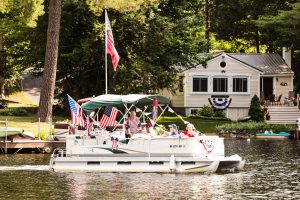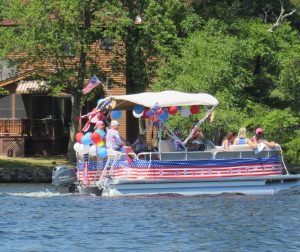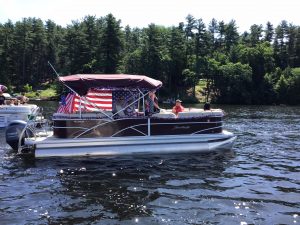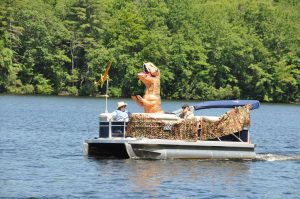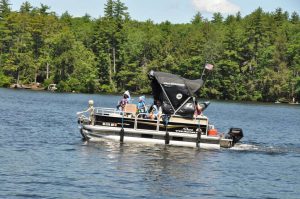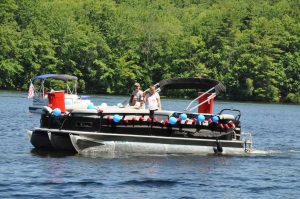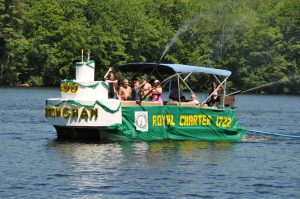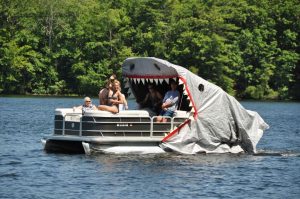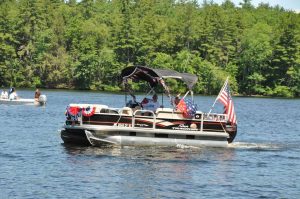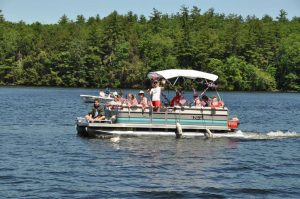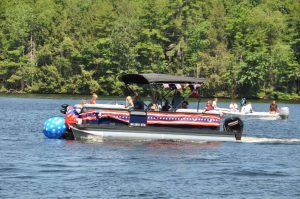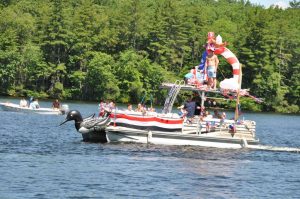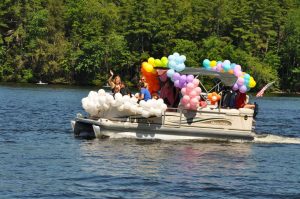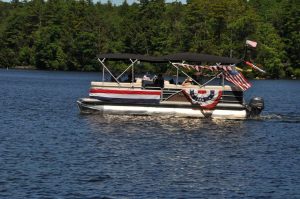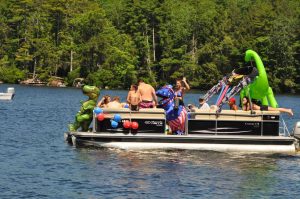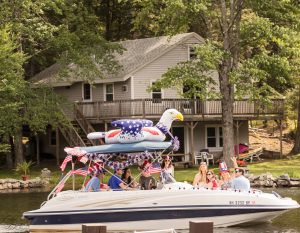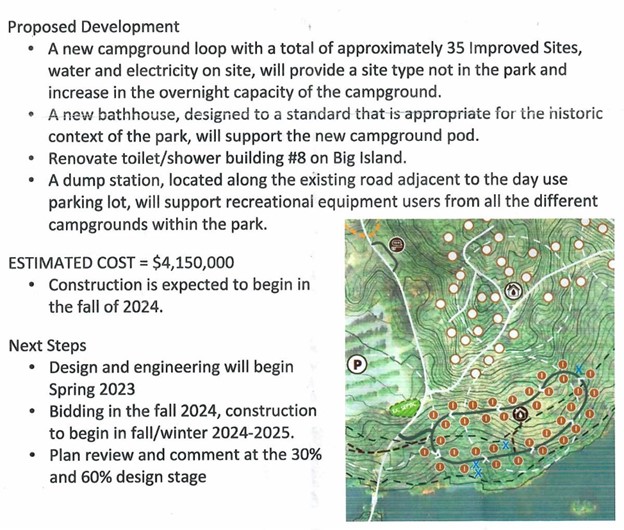 NH Parks and Recreation has plans to add 35 RV campsites at Pawtuckaway State Park. The current design to the right shows them all grouped on or near the waterfront along the North Channel.
NH Parks and Recreation has plans to add 35 RV campsites at Pawtuckaway State Park. The current design to the right shows them all grouped on or near the waterfront along the North Channel.
The State Park system is self-funding, so revenue generated from fees does not go into the general fund but is rather used to pay for personnel and maintenance needs of all the state parks. The plan to expand Pawtuckaway campsites is intended to increase revenue and the Pawtuckaway Lake Improvement Association (PLIA) appreciates that need. However, the plan calling for construction of new campsites with water and electric hookups so near a very crowded and vulnerable stretch of the lake is flawed. It threatens the health of the lake as well as its wildlife because of loss of habitat and likely shoreline erosion, not to mention the loss of recreational opportunities and spread of milfoil.

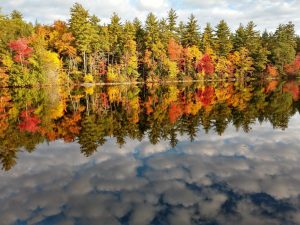 These photos show the stretch along the North Channel that would be affected. For these reasons, the PLIA opposes the existing design of the expansion, as proposed. The State has told us that the design is “conceptual” and can be modified. Based on that understanding, we want those campsites to be relocated away from the water, where they will not threaten the delicate balance of our lake. If you would like to weigh in on this project, we urge you to send a letter or email to our state officials voicing your opinion. We have drafted a letter summarizing these problems and encourage you to use it, modify its message, or draft one of your own to alert government officials about your concerns. We also have drawn up a list of officials and their contact information. For more information or feedback, please contact the PLIA at Info@pawtuckawaylake.com.
These photos show the stretch along the North Channel that would be affected. For these reasons, the PLIA opposes the existing design of the expansion, as proposed. The State has told us that the design is “conceptual” and can be modified. Based on that understanding, we want those campsites to be relocated away from the water, where they will not threaten the delicate balance of our lake. If you would like to weigh in on this project, we urge you to send a letter or email to our state officials voicing your opinion. We have drafted a letter summarizing these problems and encourage you to use it, modify its message, or draft one of your own to alert government officials about your concerns. We also have drawn up a list of officials and their contact information. For more information or feedback, please contact the PLIA at Info@pawtuckawaylake.com.
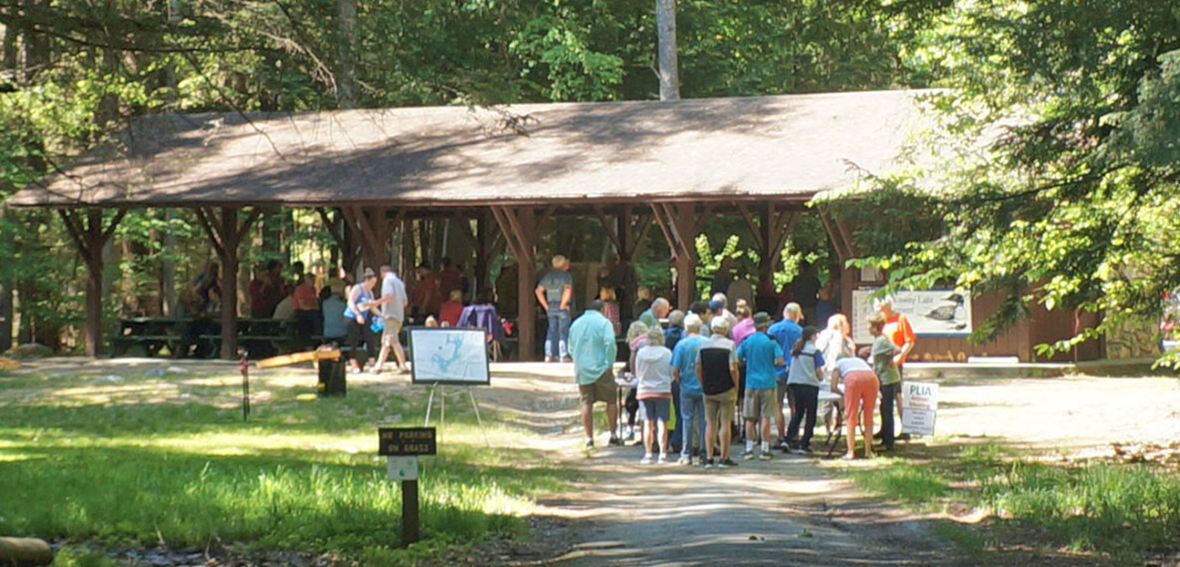 Saturday, June 3, 2023
Saturday, June 3, 2023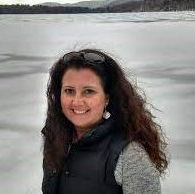 Amy has been providing expert assistance for our Milfoil Team, helping us train Weed Watchers and Lake Hosts, providing expert assistance for our Milfoil Team, doing surveys of Pawtuckaway’s plants and lake health, and monitoring our milfoil infestations.
Amy has been providing expert assistance for our Milfoil Team, helping us train Weed Watchers and Lake Hosts, providing expert assistance for our Milfoil Team, doing surveys of Pawtuckaway’s plants and lake health, and monitoring our milfoil infestations.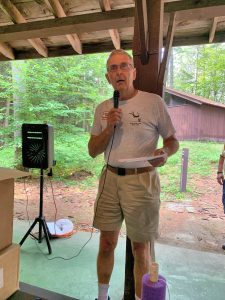 Please come to learn more about the history of milfoil and its management on Pawtuckaway Lake-it is now getting out of hand – and bring your questions!
Please come to learn more about the history of milfoil and its management on Pawtuckaway Lake-it is now getting out of hand – and bring your questions!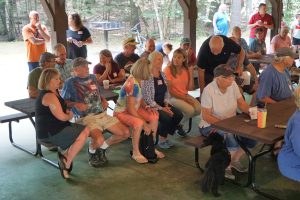 to share about our organization and the lake, much to celebrate, and future activities to discuss. Your presence makes our meeting more productive and more fun!
to share about our organization and the lake, much to celebrate, and future activities to discuss. Your presence makes our meeting more productive and more fun!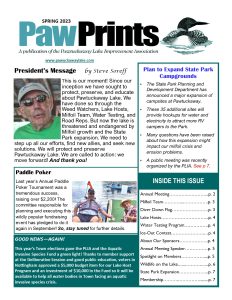 The PLIA has mailed out its annual PawPrints newsletter and it is now available online as well,
The PLIA has mailed out its annual PawPrints newsletter and it is now available online as well, 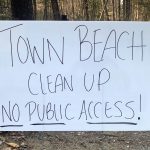 On April 15, 2023, Nottingham held a town wide clean up day. Volunteers from the PLIA pledged to return to the scene of their campaign last year at the Town beach.
On April 15, 2023, Nottingham held a town wide clean up day. Volunteers from the PLIA pledged to return to the scene of their campaign last year at the Town beach. 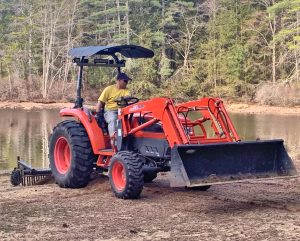 This year there was a surprise awaiting them – Autumn Ricker had brought his loader and rake to do the groundwork (so to speak) for their project to remove grasses and rocks and roots from the beach sand. While he was operating his heavy
This year there was a surprise awaiting them – Autumn Ricker had brought his loader and rake to do the groundwork (so to speak) for their project to remove grasses and rocks and roots from the beach sand. While he was operating his heavy 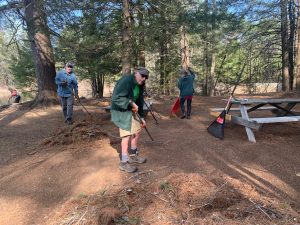 equipment, the crew got busy hauling fallen branches and debris from the area under the trees next to the beach. Then they removed more rocks and roots from the sand
equipment, the crew got busy hauling fallen branches and debris from the area under the trees next to the beach. Then they removed more rocks and roots from the sand
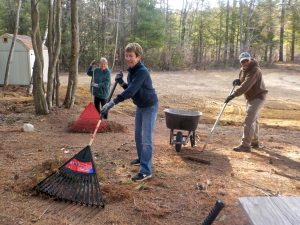 excavated by Autumn, resulting in a pristine area for summer visitors to enjoy.
excavated by Autumn, resulting in a pristine area for summer visitors to enjoy. 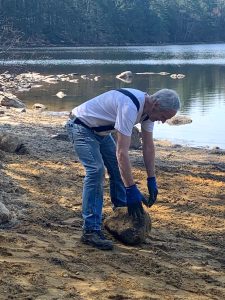 The PLIA would like to
The PLIA would like to  make Autumn Ricker an honorary member of their organization! Thanks to all for showing up and pitching in! Check out the before and after photos below. We are happy to help make Nottingham a Town to be proud of!
make Autumn Ricker an honorary member of their organization! Thanks to all for showing up and pitching in! Check out the before and after photos below. We are happy to help make Nottingham a Town to be proud of!
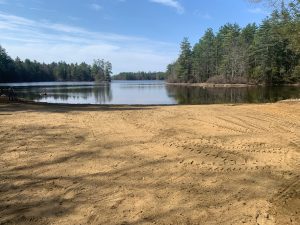
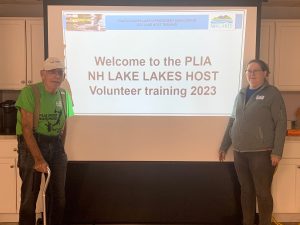 On April 1, 2023, three dozen people filled a room at the Nottingham Town Offices for a training conducted by the Pawtuckaway Lake Improvement Association (PLIA). The topic was about spotting and preventing invasive species from entering a lake or pond.
On April 1, 2023, three dozen people filled a room at the Nottingham Town Offices for a training conducted by the Pawtuckaway Lake Improvement Association (PLIA). The topic was about spotting and preventing invasive species from entering a lake or pond. 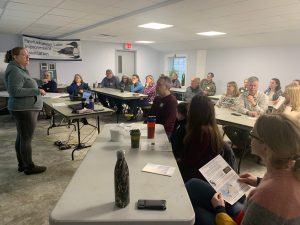 PLIA Lake Host Coordinator Dee Decker and Weed Watcher Co-Chair Steve Soreff made presentations about courtesy inspections of boats and trailers, and how to recognize aquatic pests like milfoil, phragmites, purple loosestrife, and water chestnuts.
PLIA Lake Host Coordinator Dee Decker and Weed Watcher Co-Chair Steve Soreff made presentations about courtesy inspections of boats and trailers, and how to recognize aquatic pests like milfoil, phragmites, purple loosestrife, and water chestnuts.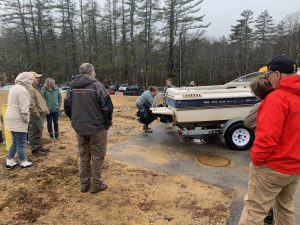 When the rain abated, the crowd moved outdoors for more instruction on ways to inspect boats for the presence of invasive “hitchhikers.”
When the rain abated, the crowd moved outdoors for more instruction on ways to inspect boats for the presence of invasive “hitchhikers.”
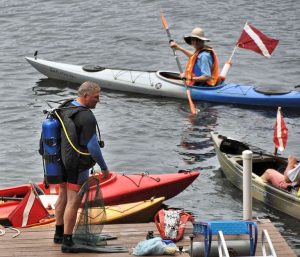 a presentation to the Nottingham Board of Selectmen at one of its regularly scheduled meetings. He outlined the history of milfoil infestations in Pawtuckaway Lake, emphasizing the hundreds of hours that PLIA volunteers have donated in efforts to find and extract this noxious threat to the lake.
a presentation to the Nottingham Board of Selectmen at one of its regularly scheduled meetings. He outlined the history of milfoil infestations in Pawtuckaway Lake, emphasizing the hundreds of hours that PLIA volunteers have donated in efforts to find and extract this noxious threat to the lake.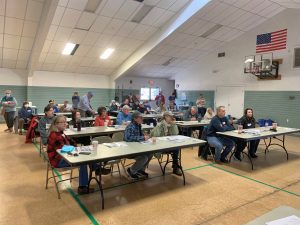 public ramps on the lake to prevent invasive aquatic species of all kinds from entering the water. Last year she organized a community training to include interested residents from other lakes in town.
public ramps on the lake to prevent invasive aquatic species of all kinds from entering the water. Last year she organized a community training to include interested residents from other lakes in town. in Pawtuckaway Lake just off the State Park boat ramp, and since then it has been located – by PLIA volunteers – in many other coves and areas of the lake. Pawtuckaway is located entirely within the borders of Nottingham, and thus the Town has taken a special interest in preserving the health of its signature resource. For this reason, the PLIA felt it was important
in Pawtuckaway Lake just off the State Park boat ramp, and since then it has been located – by PLIA volunteers – in many other coves and areas of the lake. Pawtuckaway is located entirely within the borders of Nottingham, and thus the Town has taken a special interest in preserving the health of its signature resource. For this reason, the PLIA felt it was important  to keep the Board of Selectmen and citizens of Nottingham informed about the threat posed by the growing presence of milfoil in the lake. The Town beach and State Park have recently experienced significant milfoil discoveries.
to keep the Board of Selectmen and citizens of Nottingham informed about the threat posed by the growing presence of milfoil in the lake. The Town beach and State Park have recently experienced significant milfoil discoveries.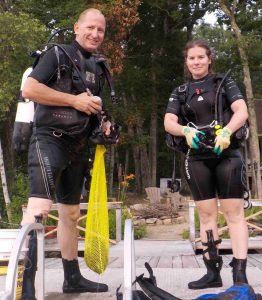 the areas of milfoil around the lake have become. The maps in his report are particularly dramatic and disturbing. He also outlined the efforts made by the PLIA and its volunteers to locate and contain these infestations. Finally, he explained what more comprehensive and possibly drastic measures might have to be taken if the situation continues to worsen.
the areas of milfoil around the lake have become. The maps in his report are particularly dramatic and disturbing. He also outlined the efforts made by the PLIA and its volunteers to locate and contain these infestations. Finally, he explained what more comprehensive and possibly drastic measures might have to be taken if the situation continues to worsen.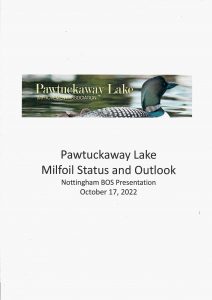 One member of the Board of Selectmen urged others to visit the lake for themselves to learn about these undertakings and see how serious the problem has become. The best way to understand the scope of milfoil growth in Pawtuckaway Lake is to read Neil’s report,
One member of the Board of Selectmen urged others to visit the lake for themselves to learn about these undertakings and see how serious the problem has become. The best way to understand the scope of milfoil growth in Pawtuckaway Lake is to read Neil’s report, 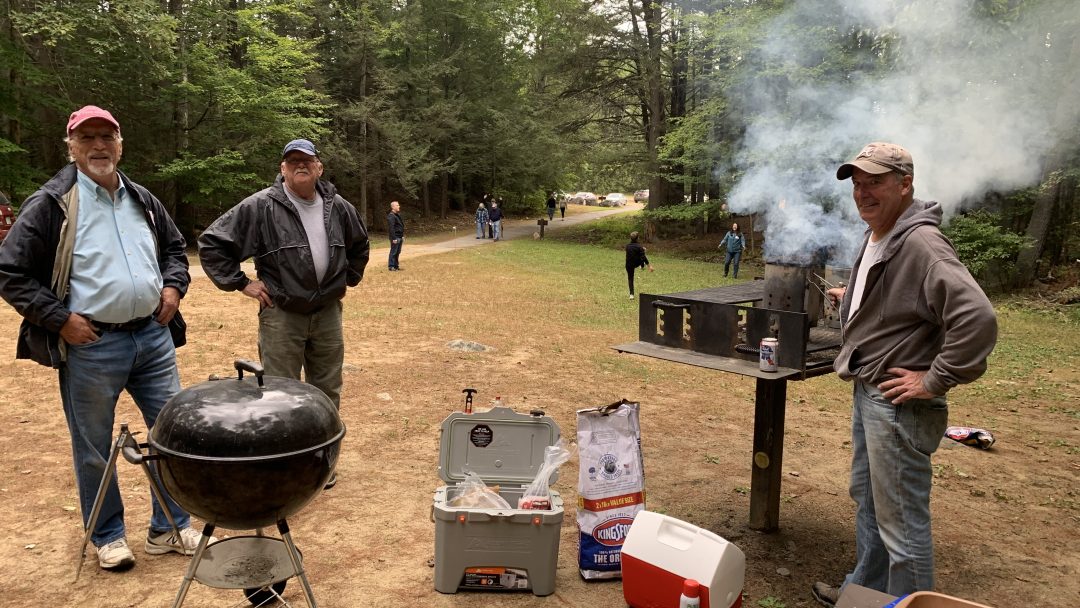
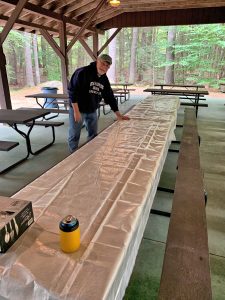
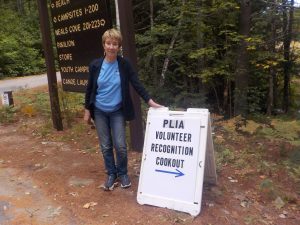
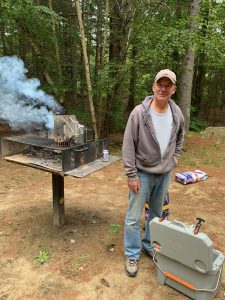

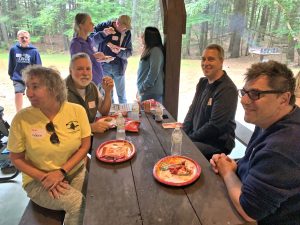 samplers, neighborhood ambassadors, Chinese mystery snail eradicators, community service contributors, roadside trash pickers, event planners, trainers, fundraisers, committee members, and all-around supporters of the work the PLIA does. When they get together, you can feel the energy of their love for
samplers, neighborhood ambassadors, Chinese mystery snail eradicators, community service contributors, roadside trash pickers, event planners, trainers, fundraisers, committee members, and all-around supporters of the work the PLIA does. When they get together, you can feel the energy of their love for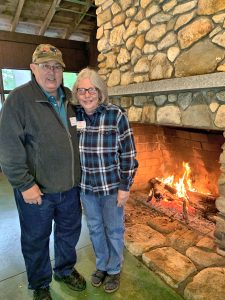

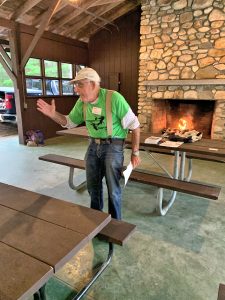
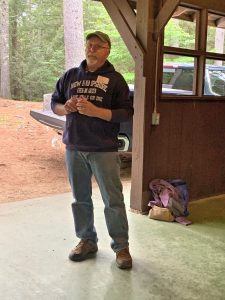

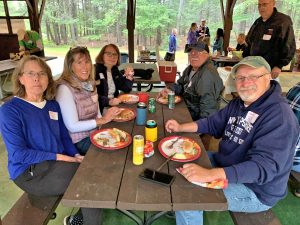
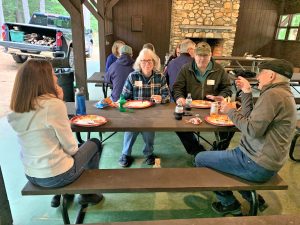 Our President listed and praised all the many volunteer activities that have been performed this year. Plans for a winter event or events on the lake are already being hatched, according to our Vice President! This summer has been particularly challenging for our Milfoil Team, with more infestations to extract and fewer Weed Control Divers to do it! We are looking to train more of them for next year.
Our President listed and praised all the many volunteer activities that have been performed this year. Plans for a winter event or events on the lake are already being hatched, according to our Vice President! This summer has been particularly challenging for our Milfoil Team, with more infestations to extract and fewer Weed Control Divers to do it! We are looking to train more of them for next year. On August 20, 56 paddlers
On August 20, 56 paddlers 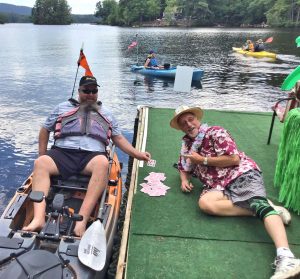 entered the Third Annual Paddle Poker Tournament held on Pawtuckaway Lake. It was a fundraiser for the PLIA and raised a whopping $2,200 for our organization’s programs! Troy Brown of the Mountain Road Trading Post donated $250 to sponsor the event, as well as discount coupons for merchandise at the store. Thank you, Troy!
entered the Third Annual Paddle Poker Tournament held on Pawtuckaway Lake. It was a fundraiser for the PLIA and raised a whopping $2,200 for our organization’s programs! Troy Brown of the Mountain Road Trading Post donated $250 to sponsor the event, as well as discount coupons for merchandise at the store. Thank you, Troy! There were five stations around
There were five stations around 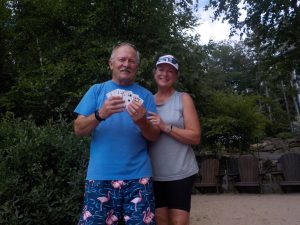 the lake offering playing cards and refreshments to participants as they paddled the course. These hosts contributed generously to the fun and games:
the lake offering playing cards and refreshments to participants as they paddled the course. These hosts contributed generously to the fun and games:  Tom Duffy and Karen Rydeen, Michele and Mark Lefebvre, Bob and Karen Given, Pete and Carol Wawrzonek,
Tom Duffy and Karen Rydeen, Michele and Mark Lefebvre, Bob and Karen Given, Pete and Carol Wawrzonek,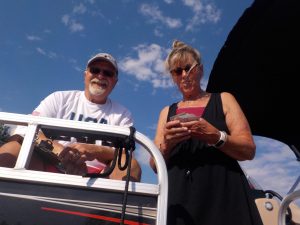 and Dee and John Decker. Thank you to these wonderful hosts!
and Dee and John Decker. Thank you to these wonderful hosts!
 Frieden (Low hand).
Frieden (Low hand).

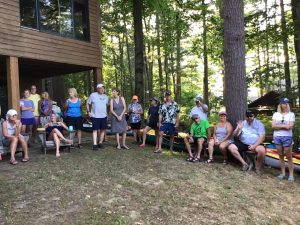 conversation was spirited, and the love for Pawtuckaway was abundant. What’s
conversation was spirited, and the love for Pawtuckaway was abundant. What’s 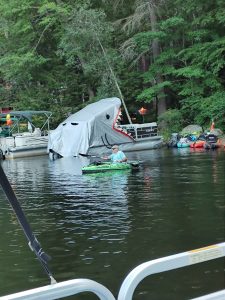 not to enjoy? Thanks to all who participated and made this event such a spectacular success – there was plenty of fun to go around (see for yourself)!
not to enjoy? Thanks to all who participated and made this event such a spectacular success – there was plenty of fun to go around (see for yourself)!